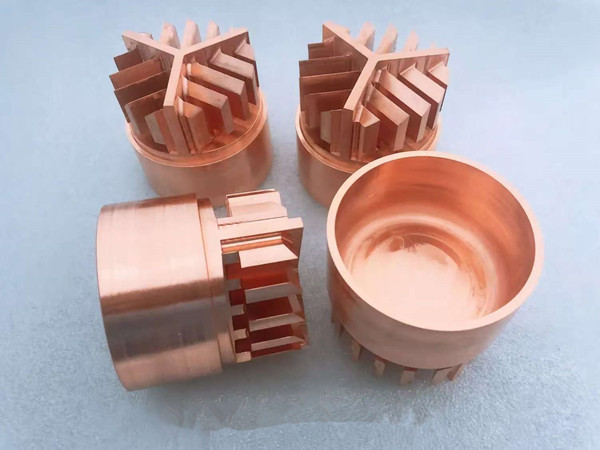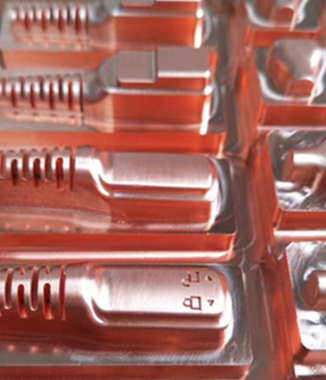Copper CNC machining is a critical process for industries requiring components with superior electrical conductivity, thermal efficiency, and corrosion resistance. At LJZ CNC Machining, we combine cutting-edge technology with decades of expertise to deliver precision copper parts tailored to your needs. This guide explores everything from material selection to industry-specific applications, helping you optimize your projects for success.
Copper CNC machining involves shaping raw copper or copper alloys into functional parts using computer-controlled milling, turning, or drilling. Known for its excellent conductivity and malleability, copper is ideal for electrical systems, heat exchangers, and industrial machinery. However, machining pure copper can be challenging due to its softness, which is why alloys like brass and bronze are often preferred for intricate designs.

CNC Milling: Ideal for complex geometries like heat sinks or connector housings. Our 5-axis machines achieve tolerances up to ±0.005 mm.
CNC Turning: Used for cylindrical components such as bushings and valve stems. Swiss-type lathes ensure precision for small, high-tolerance parts.
Wire EDM: For intricate cuts without heat distortion, perfect for thin-walled copper parts in medical devices.
Surface Finishing: Options include electropolishing (to enhance conductivity) and nickel plating (for corrosion resistance).
C101 (Oxygen-Free Copper): High conductivity for electrical terminals and busbars.
C110 (Electrolytic Copper): Combines conductivity with formability, used in transformers and wiring.
C260 (Cartridge Brass): Zinc-copper alloy for decorative hardware and low-friction gears.
C360 (Free-Cutting Brass): Superior machinability for high-volume components like fittings.
C932 (Bronze): Tin-copper alloy for bearings and marine applications.
C655 (Silicon Bronze): Corrosion-resistant alloy for valves and pump components.
C706 (Copper-Nickel): Ideal for seawater piping and heat exchangers.

Electronics: Connectors, RF shields, and circuit board terminals.
Automotive: Sensor housings, fuel injectors, and brake system components.
Renewable Energy: Solar panel connectors and wind turbine heat exchangers.
Medical: Surgical tools and MRI machine parts require non-magnetic properties.
Industrial Machinery: Bushings, spacers, and hydraulic valve bodies.
Plumbing: Corrosion-resistant fittings, compression sleeves, and valve stems.
Marine: Pump components and fasteners for saltwater environments.
Consumer Goods: Decorative fixtures, lock mechanisms, and appliance components.
Our facility is equipped to handle large-scale production with:
150+ CNC Machines: Including 5-axis mills and multi-spindle lathes for rapid throughput.
ISO 9001-Certified QC: Advanced CMM and optical comparators ensure consistency.
Just-in-Time Delivery: Streamlined workflows to meet tight deadlines without compromising quality.
Tool Selection: Use sharp, polished carbide tools to reduce galling and burrs.
Optimized Feeds/Speeds: Maintain RPM between 1,000–2,500 to prevent work hardening.
Coolant Strategy: Water-soluble coolants minimize heat buildup in high-speed operations.
Chip Management: Implement peck drilling for deep holes to avoid chip entanglement.
Secure Fixturing: Use soft jaws or vacuum chucks to prevent part deformation.
Post-Machining Finishes: Electropolishing improves conductivity for electrical parts.
Quality Assurance: Perform hardness testing and X-ray inspections for critical components.
Material Expertise: Verify experience with your alloy (e.g., C101 vs. C360).
Certifications:ISO 9001or 16949 compliance ensures quality standards.
Prototyping Support: Rapid turnaround for design validation.
Scalability: Confirm capacity for both prototype and bulk orders.
Precision Engineering: Achieve tolerances as tight as ±0.005 mm with our HAAS and Okuma machines.
Versatility: From micro components to large-scale production, we handle diverse projects.
Cost Efficiency: Bulk material partnerships reduce costs for high-volume orders.
Global Reach: Serving clients in North America, Europe, and Asia with fast shipping.
Get a Free Quote for your copper CNC machining needs today!
Q: What surface finishes are available for copper parts?
A: Options include electropolishing, nickel plating, powder coating, and passivation for enhanced durability.
Q: Can you machine pure copper without deformation?
A: Yes, LJZ CNC Swiss-type machines and optimized toolpaths minimize soft material distortion.
Q: How does copper compare to aluminum in conductivity?
A: Copper offers 20% higher electrical conductivity but is heavier and more expensive.
Q: Which industries use copper components most frequently?
A: Electronics, automotive, and renewable energy are top sectors due to copper’s conductivity and thermal properties.
Q: Do you provide DFM (Design for Manufacturing) feedback?
A: Absolutely—our engineers optimize designs for cost, performance, and manufacturability.